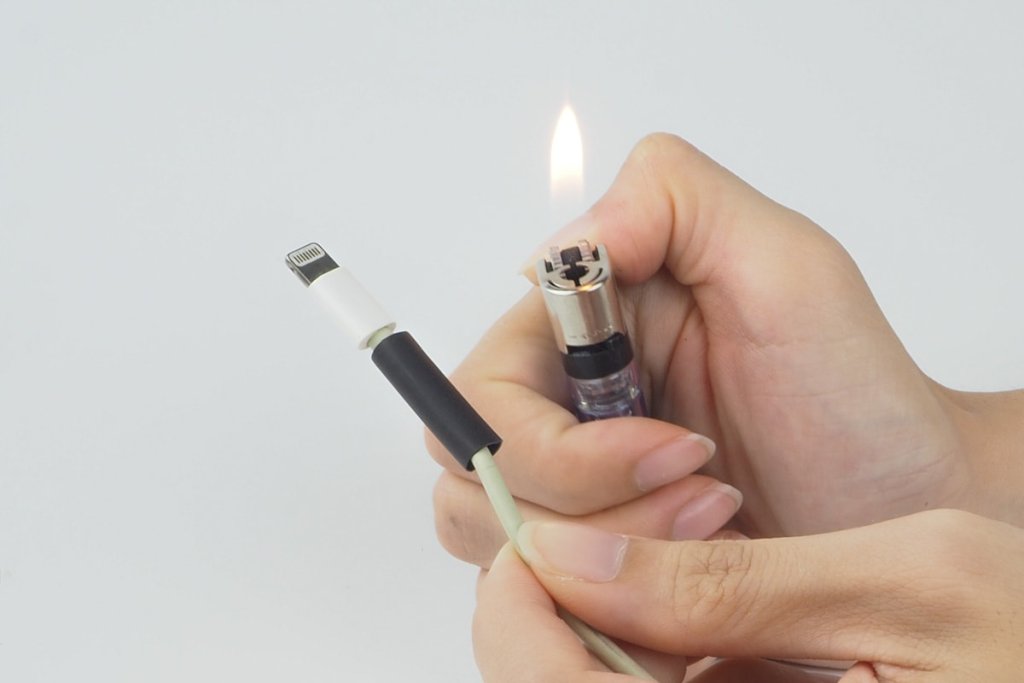Heat shrink tubing is a go-to for any DIY electrical work you may be doing at home or the office. Whether a simple repair or something more complex, there’s nothing more essential to the job than heat shrink tubing.
This handy tubing is a great way to insulate wires and even solder in some cases, which makes it a significant part of any hobbyist electrician’s toolkit.
If you’re looking for the essential guide to heat shrink tubing, look no further – no matter if you want to know what it’s used for, what it is, or the types and sizes of heat shrink tubing.
What Is Heat Shrink Tubing?
So what is heat shrink tubing? Although it’s a very common product for any budding electrician, not many people know what it is or why it’s so important.
Essentially, heat shrink tubing is a type of soft plastic tubing which is used in electric applications. When heat is applied to this tubing, it shrinks around whatever is inside it. This may seem like a simple task, but its usefulness for electrical projects is immeasurable. Heat shrink tubing allows an electrician to insulate wires efficiently by simply sliding the tubing over the wire and then applying heat.
One fantastic property of heat shrink tubing is that it only shrinks around its radius, so you won’t have to apply multiple sets per wire – one length of tubing is enough.
If you’ve seen any homemade wires with plastic tubing or casing around them, then odds are you’ve seen heat-shrink tubing at work.
What Is It Used For?
Now that we understand what heat-shrink tubing is, what is it used for? Although this has already been explained, heat shrink tubing is hardly basic with the number of things it can be used for.
Probably the most common use of heat shrink tubing is electrical insulation. Wires without tubing can be dangerous and cause shorts, so using heat shrink tubing is an easy way to fix this. Heat shrink tubing is much easier than tape or a similar product, as using those is time-consuming, and the result is unreliable.
Heat shrink tubing is also commonly used for splicing wires together and, in some cases, soldering. This wide range of applications makes it a must-have for any toolkit.
Beyond this, it can group or bundle wires, color-code wires, and protect wires from the environment. Talk about a jack of all trades.
Types of Heat Shrink Tubing?
So what types of heat shrink tubing are there? The common types are polyolefin, PVC, and silicone heat shrink tubing. These different types all have various applications, uses, and prices.
Ultimately, it’s much easier to divide heat shrink tubing by reviews and applications than by specific technical and scientific types. It’s easy to find five-star heat shrink sleeves on Croylek, so you won’t be let down no matter what you’re looking for.
This is much easier than looking at the technical details of each heat shrink tubing material, and it should be remembered that descriptions of these tubing types are usually given on each product.
Because of this, although the type of heat shrink tubing is essential, it’s not crucial for beginners so long as your heat shrink tubing has good reviews.
Heat Shrink Tubing Sizes
There are varying sizes of heat shrink tubing, but choosing between these sizes is extremely easy. So long as the heat-shrink tubing will shrink too, on average smaller than the wire you’re attempting to apply it to, it will be successful.
Because of this, you shouldn’t have to worry about specific sizes and applications of these sizes. Instead, just calculate the length of the heat shrink tubing relative to your wire size. If the tubing will be smaller than the wire when shrunk, this is a great sign that you’ve picked the proper heat-shrink tubing.
That being said, there is more nuanced once you venture into the more advanced uses of heat shrink tubing, so that should always be considered.
How To Use Heat Shrink Tubing
Using heat shrink tubing on wires is incredibly simple and shouldn’t be a problem for anyone willing to follow some simple steps. Although slight issues may arise, heat shrink tubing is – in general – incredibly straightforward.
First, selecting the heat shrink tubing that fits your wiring is always essential. If you pick too large tubing, this obviously defeats the entire purpose of heat shrink tubing.
Next, cut off the heat shrink tubing required for your project and put it on your wiring. From here, you can situate the wire in an accessible location for exposure to heat.
Finally, all left is to heat the tubing and let it cool down. After this, your heat shrink tubing application is complete.
Remember These Tips
Overall, using heat shrink tubing is straightforward. The product may be innovative and valuable, but it’s undoubtedly straightforward to implement.
Heat shrink tubing is simply a plastic casing that will shrink when heat is applied to it. Although this may sound simple, it’s beneficial. It comes in multiple sizes and materials and can be used in many applications – from insulation to splicing to soldering.
Using it is incredibly simple. Essentially, the user must apply a length of tubing to the wire they wish to insulate and then apply heat to the project from here.
The tubing will shrink to slightly smaller than the size of the wire, at which point your wire will be insulated.
Although the essential guide to heat shrink tubing may be elementary, this product is one you do not want to miss out on as a hobbyist or beginner electrician.

